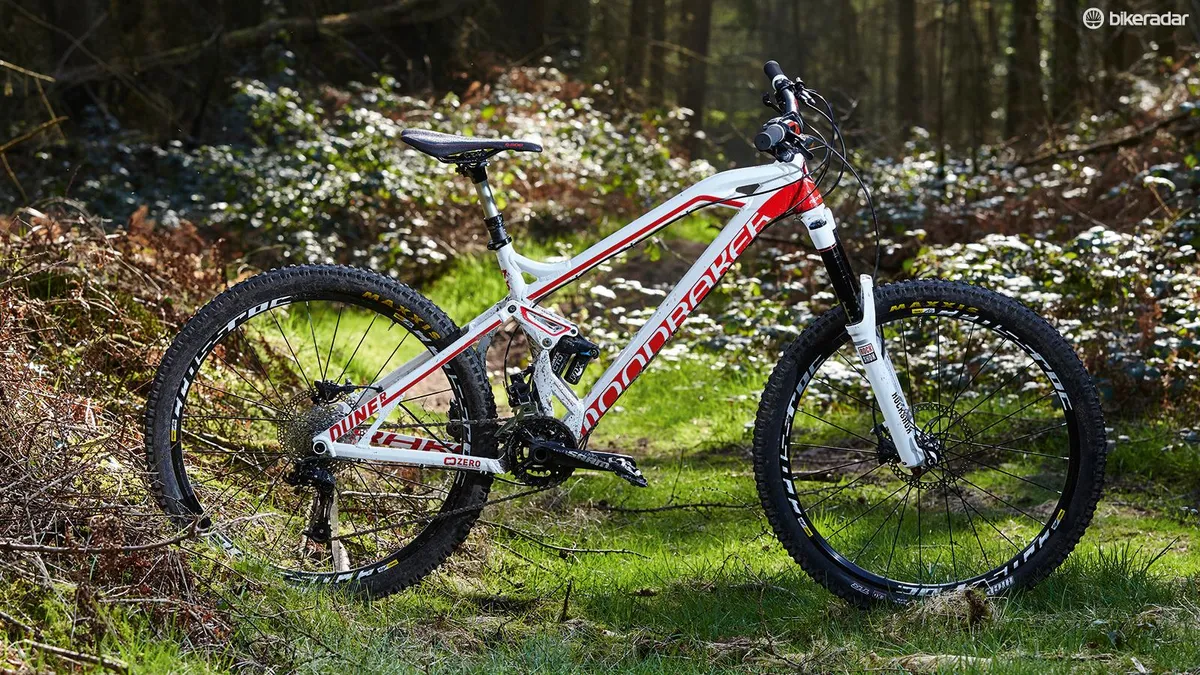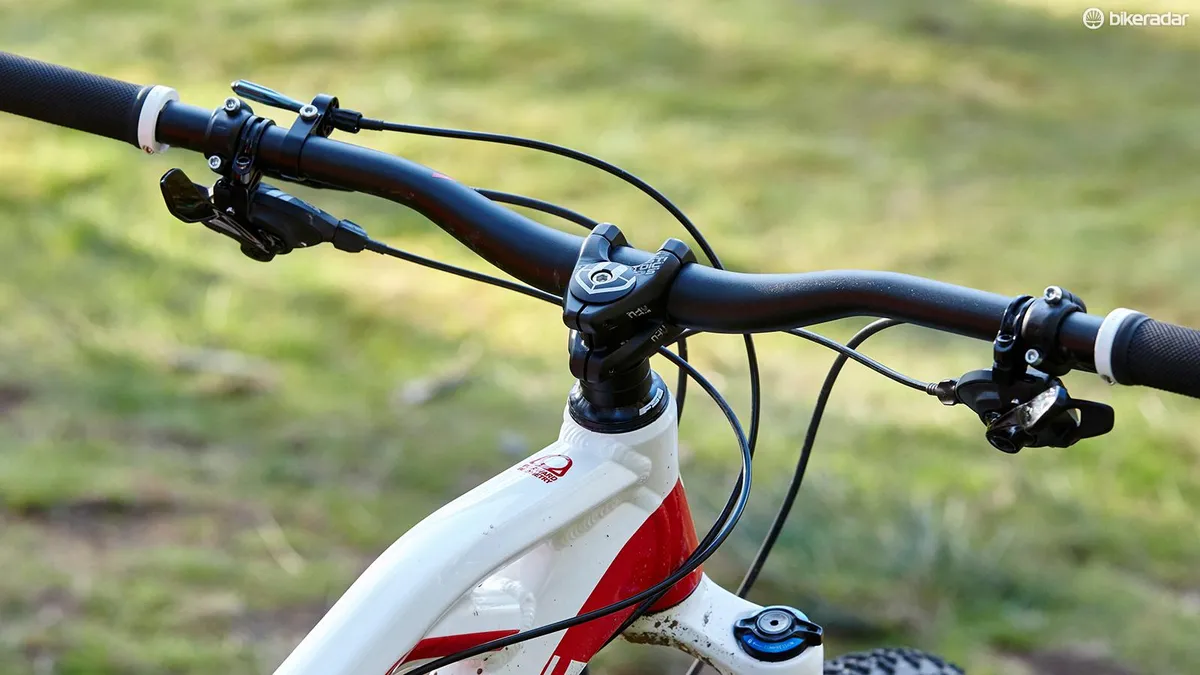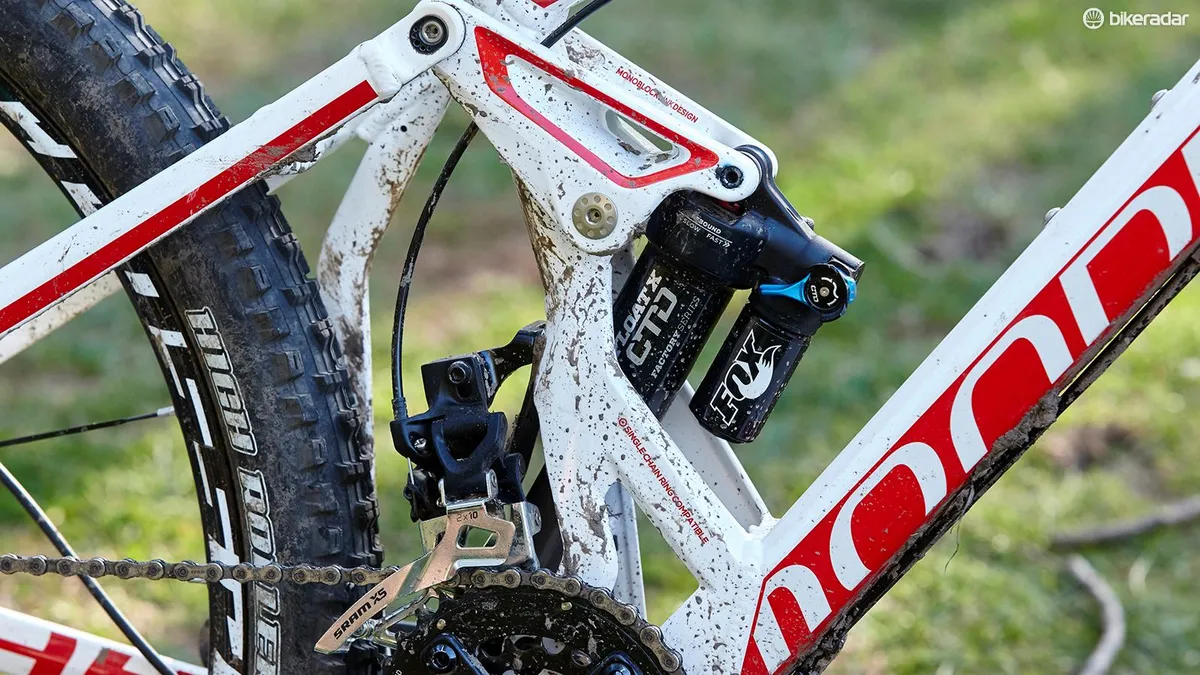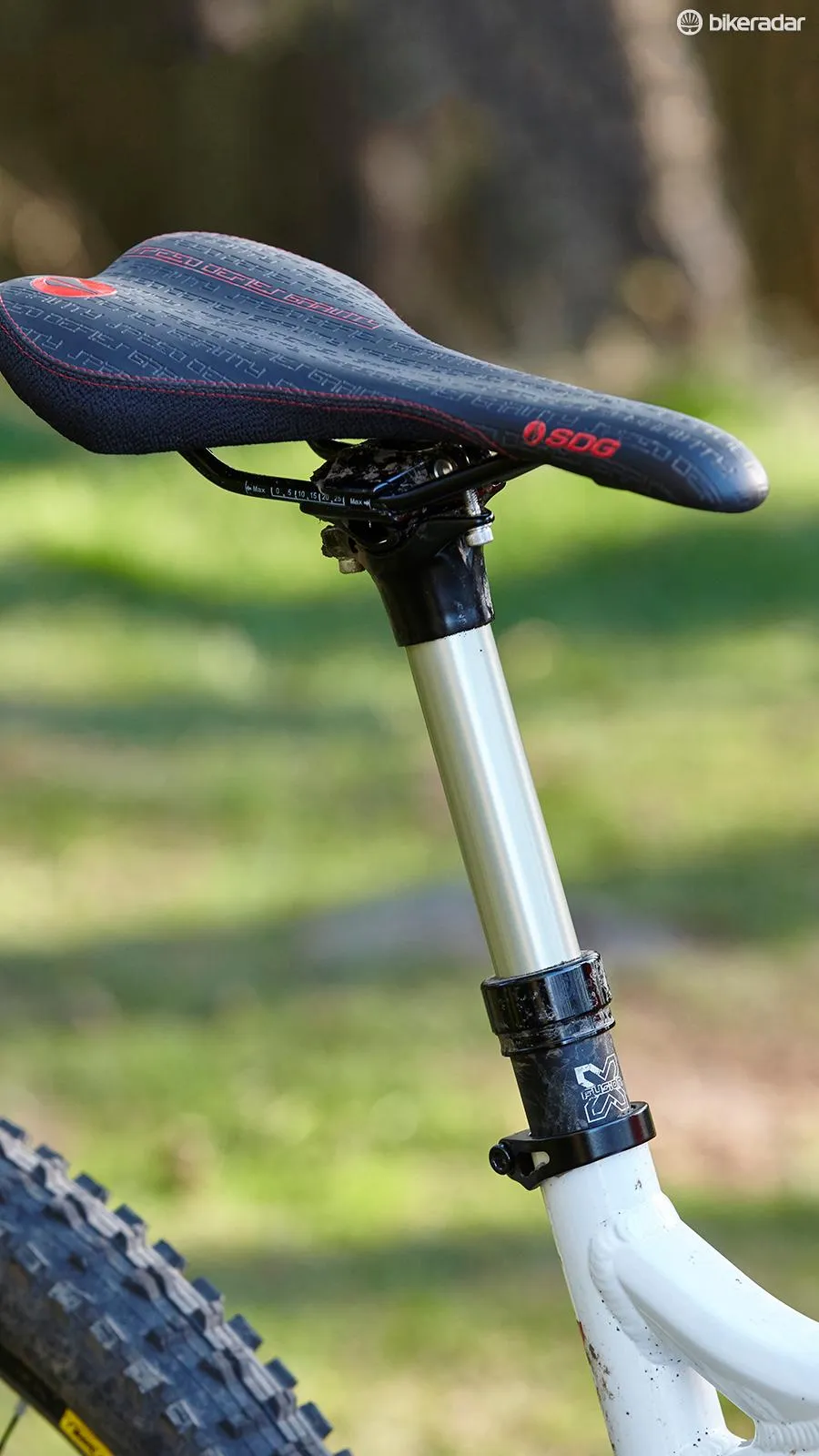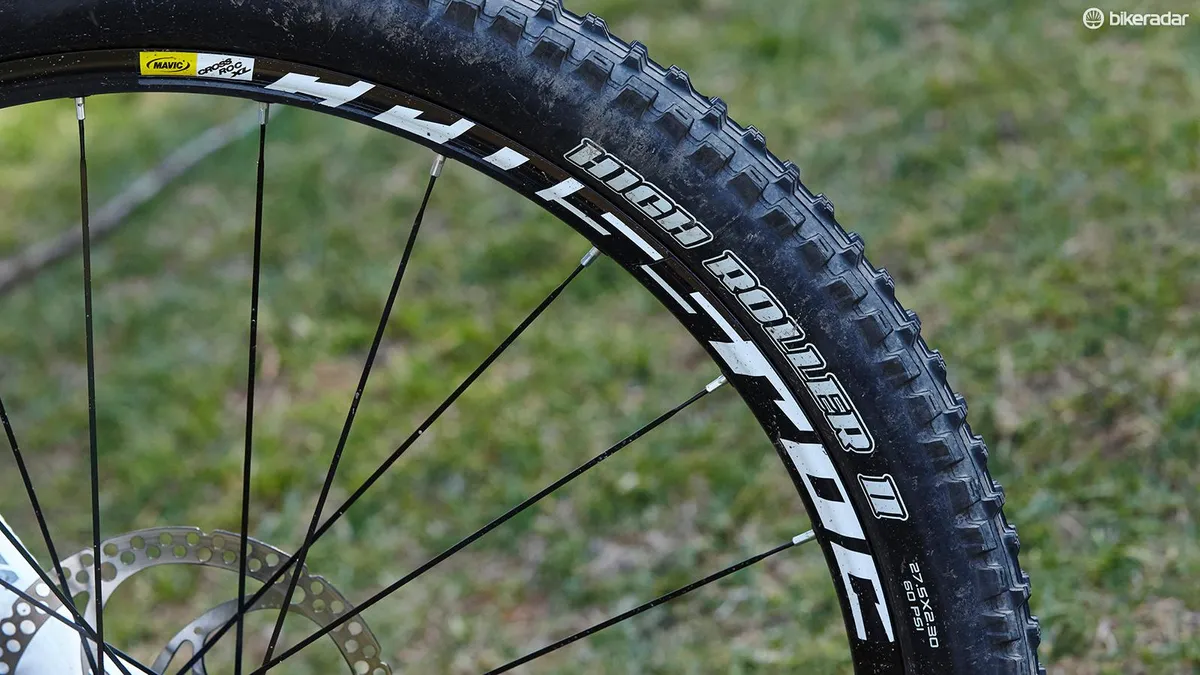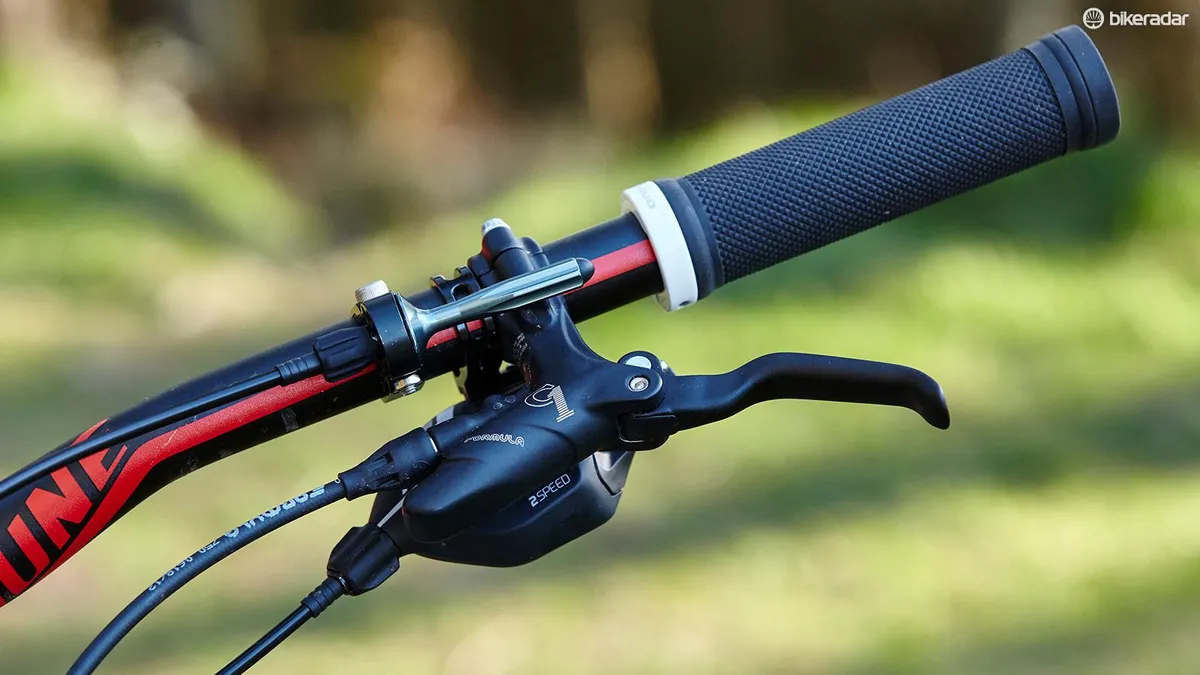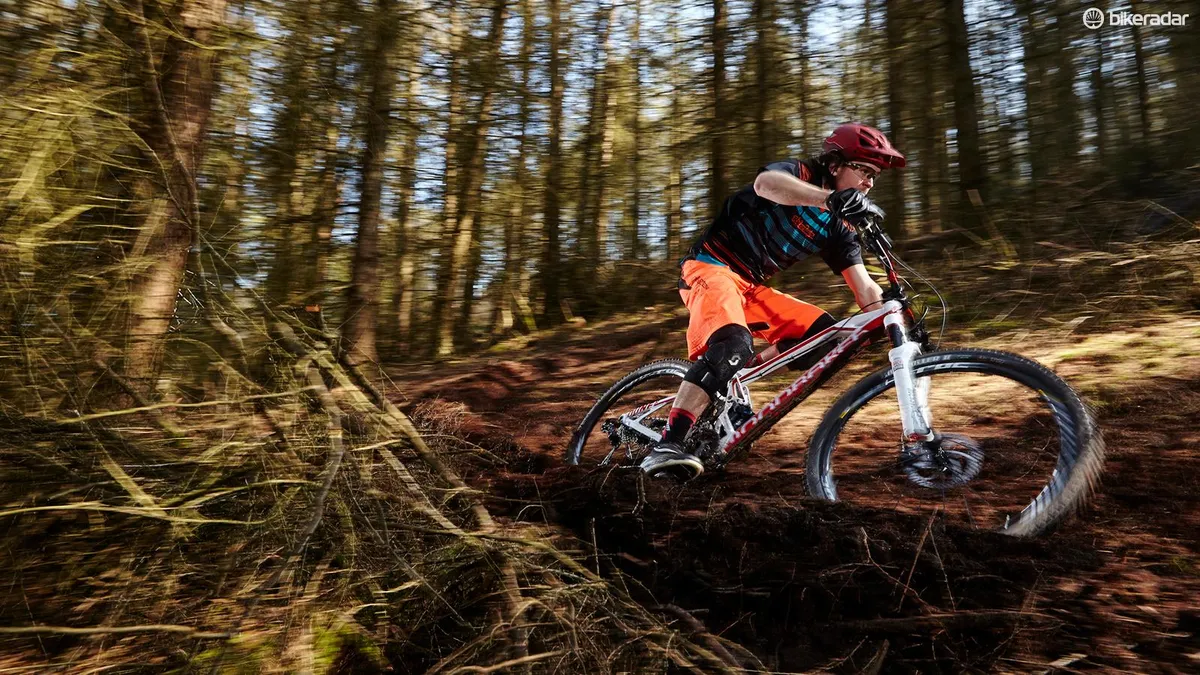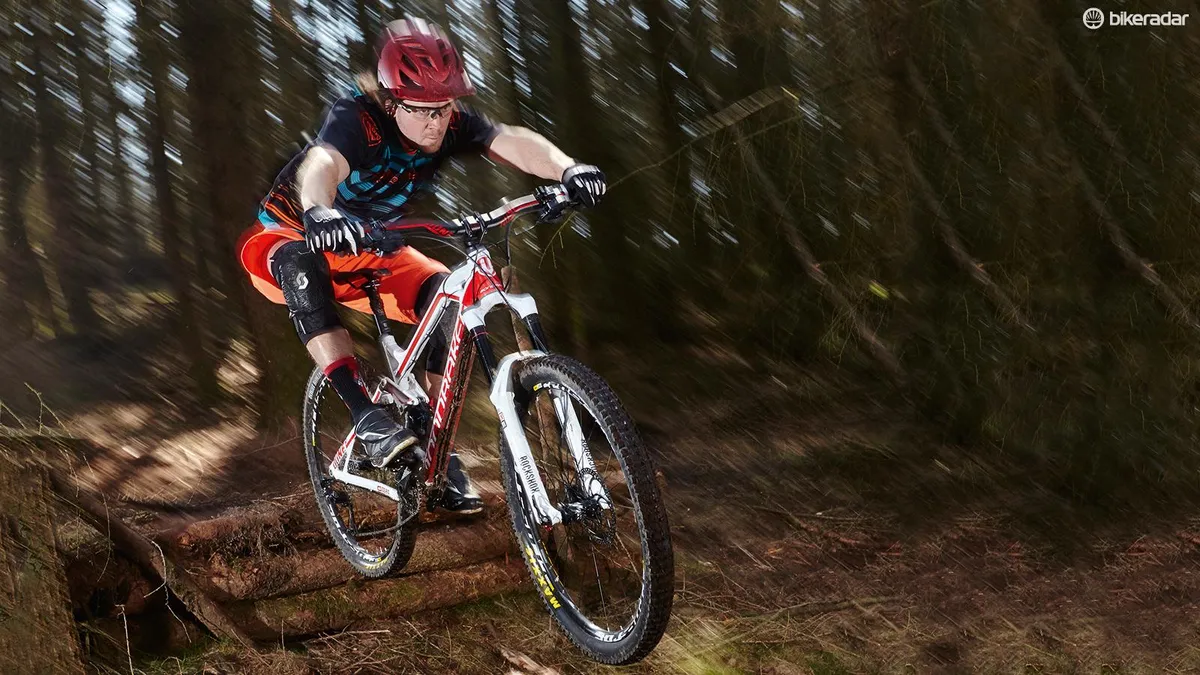Super-long and with an outrageously stumpy stem, Mondraker’s Dune R – which we mostly had a blast on last year – rips up the enduro geo handbook. But is it all about the plummet rather than the pedal, and do its 2015-edition parts match up?
Frame and equipment: usual ruling Forward Geometry, usual Mondraker spec compromises
Mondraker’s now infamous long frame/short stem Forward Geometry setup is a potential game changer for fast-and-loose riders, and they match it with equally unique frame features. The Dune’s cross braced, hump backed top tube and down tube add stiffness to the extra-long front end, while the lower seat tube and open bottom bracket ‘basket’ keep the suspension weight low and central. The rear end is kept relatively skinny and light for maximum responsiveness.
The Factory spec Fox damper and Pike RC fork plus decent DT Swiss wheels running high-grip Maxxis High Roller II treads create a quality rolling chassis and the own-brand cockpit gear is well shaped too. The mixed SRAM 2x10 transmission with ‘hidden’ low-grade chain and cassette is less impressive. X-Fusion’s HiLo Strate dropper post was unreliable from new, continuing a string of frustrating ride-spoiling experiences with that unit.
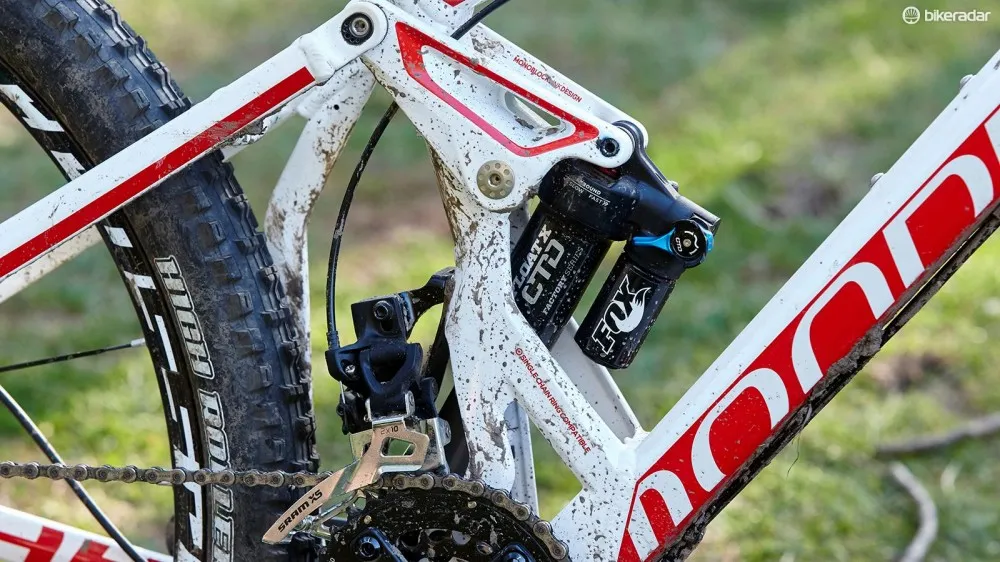
The impressively controlled Zero suspension system is a set-and-forget job
Ride and handling: radical all-mountaineer thirsting for abuse
If long frames and short stems are the favoured route to maximum stability and ultra-responsive traction control then nobody deserves more credit for proving it works than Mondraker, via Forward Geometry. If you want to know how radical the system is, the Dune was still the longer than other gravity-oriented enduro bikes we were testing alongside it – including Lapierre's Spicy and Devinci's Spartan – in terms of top tube length and wheelbase despite the fact importers Silverfish could only get us a medium sample rather than the requested large.
In contrast, the 30mm stem was the shortest – and there’s an option to go even shorter with a 10mm stem if you want the full ultra-light-steering Forward Geometry effect. The steering and stretch don’t operate in isolation though. Mondraker’s frame design sinks the shock and linkage weight as low and centrally as possible. As a result, even though the bottom bracket is relatively high the centre of gravity is low, which increases stability further.
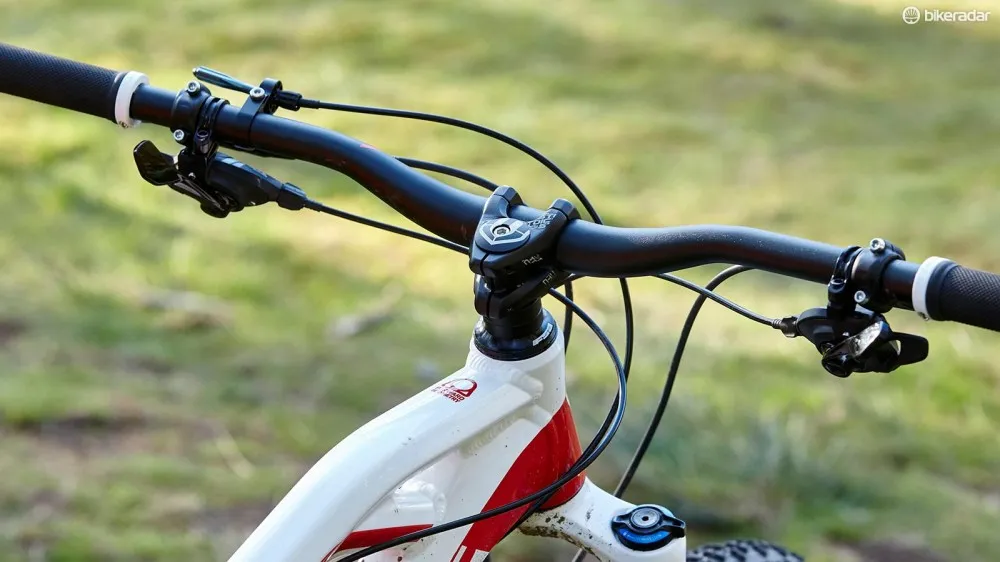
The wide bar, tiny stem and extra-long front end create an amazing blend of surefooted stability at speed and synapse-fast traction reaction
Just making a bike very stable and hard to move off line would create a dull and restrictive ride. The genius of Forward Geometry is how it manages to make the bike extremely playful. Up front the head angle is a reasonably quick-steering (by modern enduro standards, at least) 66.5 degrees and the 30mm stem lightens steering feel up even more. It’s easy to stir the front wheel around to chase traction or trip the steering off line to drop it into turns with maximum commitment.
On more open or loose corners the back end is short enough to whip round easily and the skinny rear stays keep it light and flickable. Despite the skinny rear and open box-section frame belly it’s stiff enough to go where you want it and deliver on the radical lines it begs you to take through corners. The Maxxis High Roller IIs provide a ton of grip if you get them on to their aggressive shoulder tread and the DT Swiss wheels are tight enough to keep traction communication clear however much abuse you give.
The suspension adds to the outstanding chaos-taunting character of the Dune. RockShox’s Pike fork needs no introduction and what the RC version lacks in fine compression tuning adjustment it makes up for in simple set-and-forget control via the smooth and consistent Charger damper. Mondraker’s Zero suspension system uses a floating shock design to deliver a smooth and controlled response from the Factory spec (though not gold Kashima coated) Fox Float X piggyback shock. While the rebound dial buried in the head of the shock is a pain to adjust the side-mounted Climb/Trail/Design lever makes it easy to find a plush or pert feel for current conditions.
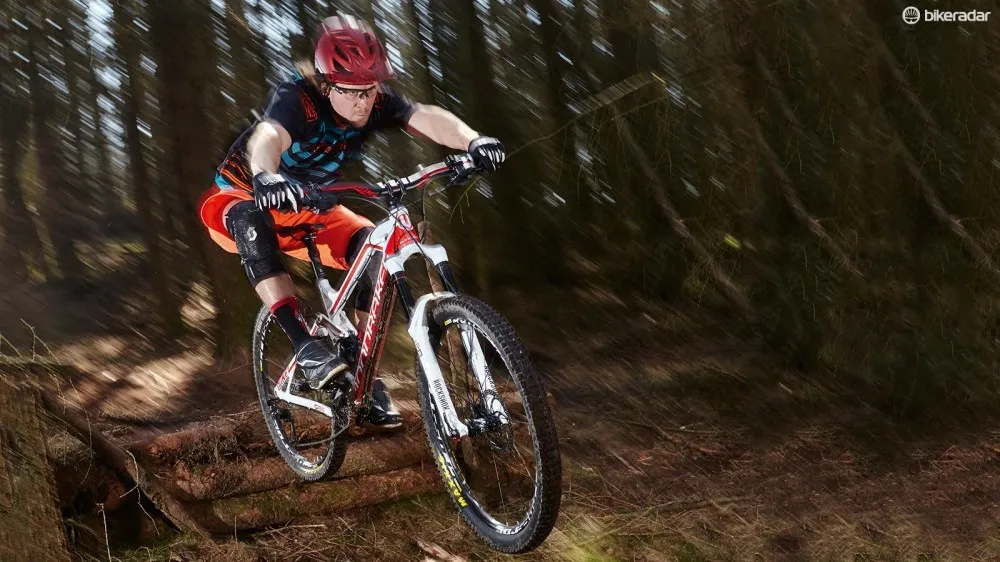
RockShox’s Pike RC fork may be further out front than normal on the Dune but it’s still a fantastically controlled confidence-amplifier
The balance of chain reaction and wheel path is good enough that, apart from a bit of softness and bob if you’re really straining the pedals round in the inner chainring, there’s positive and predictable drive feedback. That means leaving the shock in Trail mode after a simple sag-based set-up is fine in most situations. It removes the need for any specific pedalling style or other riding approach to get good results whether you’re climbing or kicking in some extra speed between corners.
The Dune is a reasonable weight and the wheels aren’t heavy, which helps get it up to speed promptly. It’s a sign of how composed the suspension is that we didn’t lose the chain once. We’d recommend a single ring and/or chain device upgrade as soon as possible, and the droopy, unreliable dropper is a definite ride spoiler.
Verdict
When it came to claiming the honours among our recent long-travel enduro bike test, the Dune was – along with Specialized's Enduro Elite – one of two standout rides. With kit and sizing glitches potentially causing problems, both machines have a legitimate claim to top-dog status once you've factored your personal preferences into the mix. If you surrender yourself to its radical character and almost too easy speed, Mondraker’s Dune R rules the roost in terms of full gas, laugh-at-your-previous-limits confidence. Don't forget that kit value isn’t great though – and the high probability of a drooping dropper post is a real ride ruiner.
